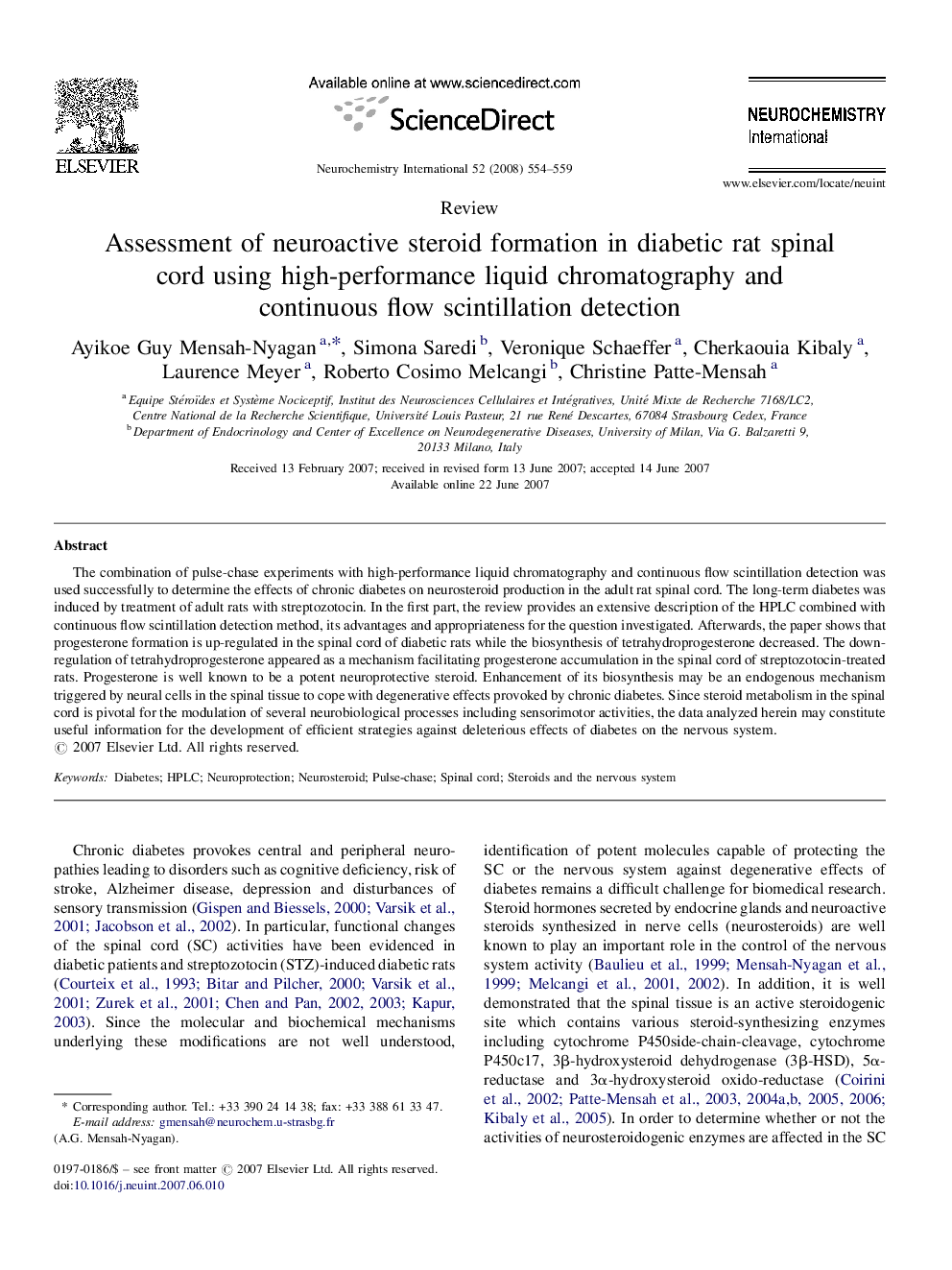| Article ID | Journal | Published Year | Pages | File Type |
|---|---|---|---|---|
| 2201743 | Neurochemistry International | 2008 | 6 Pages |
Abstract
The combination of pulse-chase experiments with high-performance liquid chromatography and continuous flow scintillation detection was used successfully to determine the effects of chronic diabetes on neurosteroid production in the adult rat spinal cord. The long-term diabetes was induced by treatment of adult rats with streptozotocin. In the first part, the review provides an extensive description of the HPLC combined with continuous flow scintillation detection method, its advantages and appropriateness for the question investigated. Afterwards, the paper shows that progesterone formation is up-regulated in the spinal cord of diabetic rats while the biosynthesis of tetrahydroprogesterone decreased. The down-regulation of tetrahydroprogesterone appeared as a mechanism facilitating progesterone accumulation in the spinal cord of streptozotocin-treated rats. Progesterone is well known to be a potent neuroprotective steroid. Enhancement of its biosynthesis may be an endogenous mechanism triggered by neural cells in the spinal tissue to cope with degenerative effects provoked by chronic diabetes. Since steroid metabolism in the spinal cord is pivotal for the modulation of several neurobiological processes including sensorimotor activities, the data analyzed herein may constitute useful information for the development of efficient strategies against deleterious effects of diabetes on the nervous system.
Related Topics
Life Sciences
Biochemistry, Genetics and Molecular Biology
Cell Biology
Authors
Ayikoe Guy Mensah-Nyagan, Simona Saredi, Veronique Schaeffer, Cherkaouia Kibaly, Laurence Meyer, Roberto Cosimo Melcangi, Christine Patte-Mensah,
